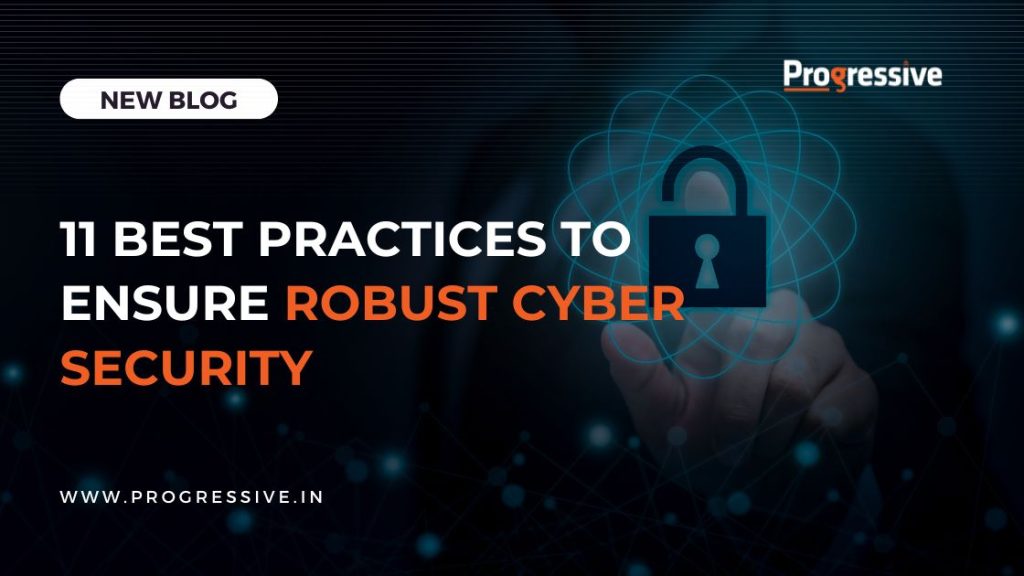
Cyber security threats are constantly evolving, and businesses of all sizes are vulnerable to attacks. As we enter 2023, ransomware attacks and social engineering are shifting to a new paradigm. Businesses need to stay on top of the latest cyber security best practices to protect their data and assets.
Let’s discuss eleven key cybersecurity best practices that businesses can implement to improve their security posture for 2023 and beyond. From improving your security posture to maximizing data protection, following are the key-measures to stay resilient. These best practices for cyber security will help businesses stay ahead of the ever-changing cybersecurity landscape.
Following are the Cyber Security Best Practices to Keep Your Business Safe :
1. Maintain organization-wide cyber hygiene.
Maintaining good cyber hygiene practices is critical for keeping your business secure. This means regularly updating your software and systems, using strong passwords, and ensuring that all your devices are protected by antivirus software. This helps build a robust foundation for your systems to remain resilient against potential threats.
2. Cyber security tips for employees against phishing attacks.
Phishing attacks are a common form of cyberattack, in which an attacker attempts to trick you into giving them access to your sensitive information. It’s essential to educate your employees on how to spot and avoid phishing attacks. This can include regular training sessions, simulated phishing tests, and reminders to be cautious when opening emails from unknown senders or clicking on suspicious links.
3. Go for a security bundle, not just platform-based offerings.
When it comes to cybersecurity, it’s important to think beyond just the platform or software you’re using. Instead, consider a security bundle that includes a range of different security tools and solutions to cover all aspects of your business. You can opt for 24×7 Security Operations Center (SOC) services that enables monitoring, threat detection, extended detection & response (XDR), and more.
4. Craft an outsourcing strategy that meets your hybrid working needs.
As more businesses embrace remote and hybrid working, it’s important to craft an outsourcing strategy that meets your specific needs. This can include outsourcing Security Incident & Event Management, Security Orchestration, Automation and Response, and other security services to a managed security services provider who can help you manage your security risks and maintain your cyber resilience.
5. Prioritize backup and disaster recovery.
In the event of a cyberattack or other security incident, having a backup and disaster recovery plan in place is essential. This means regularly backing up your data and systems to an off-site location and having a plan in place to quickly restore your operations in the event of an outage or other disruption.
6. Consider VAPT testing to identify security gaps.
Vulnerability Assessment and Penetration Testing (VAPT) can be a useful tool for identifying potential security gaps in your systems and infrastructure. This involves testing your systems and applications for vulnerabilities and attempting to exploit them in a controlled environment. By identifying potential security gaps in this way, you can take steps to address them before attackers exploit them.
7. Compliance is a competitive advantage, not just a formality.
Compliance with cyber security regulations and industry standards is essential for ensuring the security and privacy of your customers’ data. However, it’s also a competitive advantage, as customers are increasingly looking for businesses that take cybersecurity seriously. By maintaining compliance, you can build trust with your customers and differentiate yourself from competitors.
8. Zero trust policy – one of the top cyber security best practices.
A zero-trust policy involves assuming that no one is automatically trusted, even those within your organization. Instead, access to sensitive information is only granted on a need-to-know basis. It is continuously monitored to ensure that it remains secure. By embracing a zero-trust policy, you can reduce your risk of insider breaches and other security incidents.
9. Evaluate your affiliates and rethink third-party risks.
Third-party vendors and affiliates can pose a significant security risk, as they may have access to sensitive information or systems within your organization. It’s important to evaluate these relationships carefully and to implement strict security controls to mitigate the risk of a security incident.
10. Keep an eye out for social engineers.
Social engineering is a common tactic used by cybercriminals to gain access to sensitive information. This can include phishing attacks, but can also involve impersonation, pretexting, or other tactics designed to trick individuals into divulging confidential information. It’s important to be aware of these tactics and to educate your employees on how to recognize and avoid them.
11. Research, learn & implement (continuously).
With the constantly changing threat landscape, it’s important to stay prepared for emerging security threats, implement new technologies, and learn best practices. This involves ongoing research to identify potential vulnerabilities and risks, continuous learning to understand your systems and infrastructure, and the implementation of new tools, policies, and procedures to address any identified risks.
Need to learn more about cyber security best practices for your business?
You can talk to our cybersecurity experts here and get your cyber security concerns addressed effectively.